In the Andes, the past, present and future are interconnected, perceived as occurring simultaneously rather than separately. Following this cue, the curators of ‘Peru: A Journey in Time’ at the British Museum challenge visitors to move beyond a linear, Western understanding of time. Although the exhibition is ordered roughly chronologically, beginning with early cultures such as the pre-Inca Chavín and ending with the contemporary, the past and present are interwoven throughout. Alongside pre-contact ceramic vessels or woven textiles are videos of Indigenous Quechua farmers and craftspeople wearing traditional dress and describing their modern practices of growing corn, building boats, weaving, or caring for roads.
Meanwhile, we are invited to imagine the unique geographies and environments of the Central Andes. A vast coastline with wide swaths of desert is home to the famous Nazca Lines, thought to have been created between 500BC and AD500; its dry sands also provided a perfect environment for the preservation of the exquisite textiles on display. The high peaks of the glacier-topped Andes mountains (threatened today by rising global temperatures) shape the spine of South America and formed the traditional heartland of the Incas. The mountains, conceptualised as deities, are evoked in a number of works included in the exhibition. The vast Amazon offers dense forest and tremendous biodiversity. This highly varied and, at times, challenging landscape, provides the backdrop for the exhibition. Large photographs on the walls illustrate sites such as the coastal desert Moche Huaca de la Luna and the Inca citadel of Machu Picchu, perched on a mountain pass where the Andes plunge into the Amazon. We are reminded of the ingenious methods Indigenous peoples used to transform and manipulate the landscape – vast road networks, elaborate terracing, great feats of structural engineering.

Ceremonial pottery drum depicting a mythical scene (100 BC–650 AD), Nasca, Peru. Private collection, on loan to the Museo de Arte de Lima. Photo: Daniel Giannoni
The objects included in the exhibition themselves represent a triumph. The Anglo-Peruvian curatorial team, led by Cecilia Pardo Grau and Jago Cooper, worked closely with the Museo de Arte de Lima (MALI) to bring to London works and artefacts from collections throughout Peru as well as from institutions and private collections in Europe. For aficionados of the pre-contact art of the Andes region, the British Museum holdings on display will be a particular revelation as many have never before been viewed by the public. For instance, juxtaposed against a photograph of a hummingbird geoglyph – one of the Nasca Lines – is a sumptuous Nasca cotton weaving, the border of what was likely once a larger funerary blanket, featuring embroidered pink, yellow, and green hummingbirds that contrast strikingly with the rich, near-black indigo of the cloth. Scholars have often highlighted the centrality of textiles to Andean cultures; the exhibition includes a number of objects from British Museum collections that emphasise this importance, including woven garments, bags and blankets, but also ceramic representations of weaving and examples of quipus, the knot-and-cord writing system used by the Incas and their predecessors.
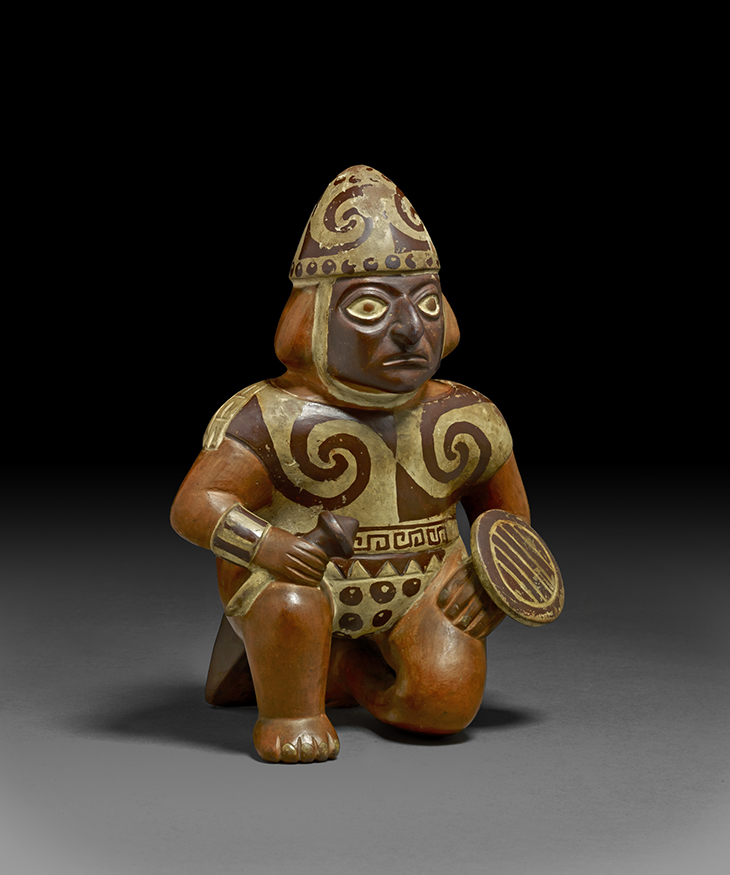
Painted pottery vessel in the form of a warrior (100–600), Moche, Peru. Photo: © 2021 The Trustees of the British Museum
Another revelation of the exhibition are the carved-wood Moche sculptures found by a British company on the Macabi Islands during guano extraction in the 1800s. The Moche are better known for their ceramics with highly polished, elaborately painted surfaces or three-dimensional depictions of animals and figures, and many of these, drawn from the British Museum stores, are included here too;. But these wood figures, preserved by the guano itself, invite us to think about Moche artistic production in a lesser studied medium.
Popular imagination tends to focus on aspects of Indigenous cultures of the Americas perceived to be ‘exotic’ – ritual executions, for instance, or the use of hallucinatory substances. Both of these have a place here. We are told, for instance, about the Inca ritual known as capacocha, in which select children were offered to the high mountain deities alongside textiles and small gold and silver statues of llamas and humans (beautiful examples of which are on display). We are shown woven bags used for the storage of coca leaves, a mild stimulant, as well as figurines holding implements associated with coca chewing. The exhibition also includes depictions of severed heads, decapitations and ritual battle; but the curators have been careful not to sensationalise, presenting these practices as part of complex and nuanced belief systems.
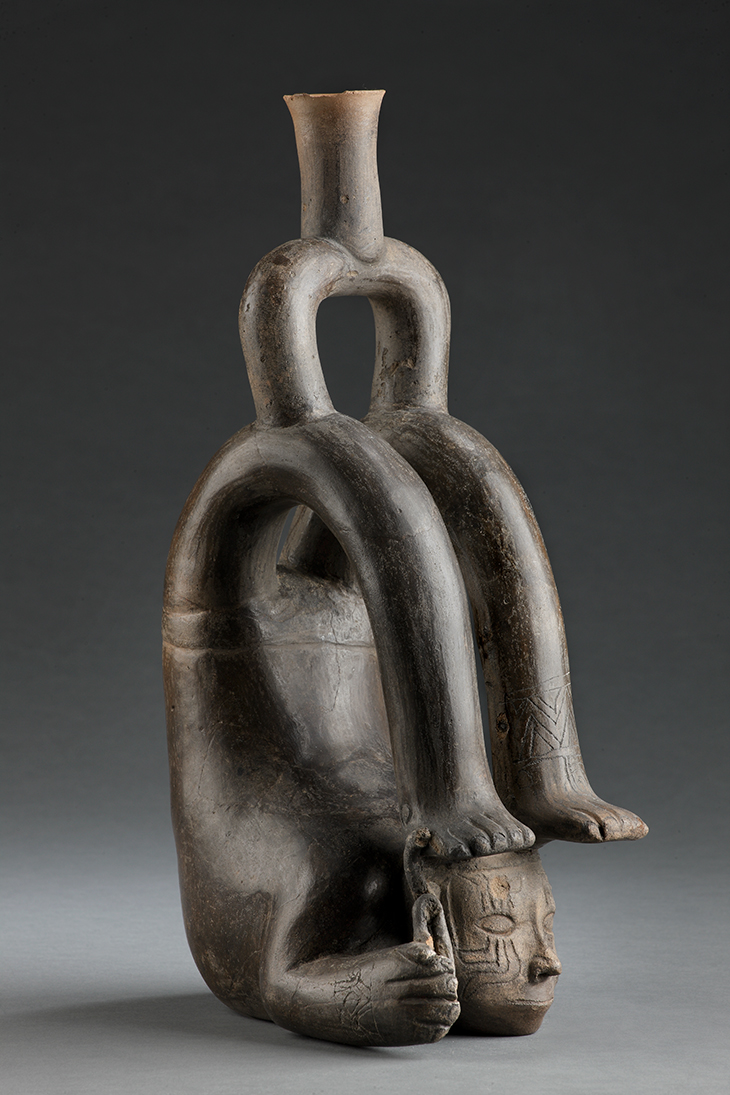
Pottery vessel in the shape of a contorted body (1200–500 BC), Cupinisque, Peru. Museo de Arte de Lima. Photo: Daniel Giannoni
Although these potentially fraught areas are handled well, it is worth noting one element of the show’s framing that goes unproblematised: the idea of ‘Peru’ itself. This exhibition has been sponsored by the Peruvian government, specifically PromPerú, the country’s official tourism board. It is intended both as a commemoration of 200 years since Peruvian independence from Spain and as a form of advertising, encouraging visitors to consider Peru as a tourist destination for future travel. The origin of a region known as ‘Peru’ begins, however, with Spanish colonialism, a historical period touched on briefly in the final room of the exhibition. The Inca called their empire Tawantinsuyu, the land of the four quarters, and it extended into parts of what are now Bolivia, Ecuador, Chile and Colombia. The exhibition leverages the Incas and their predecessors (the Moche, Nazca, Chavín, etc) as part of a promotional project that, while justly celebrating contemporary Indigenous peoples, nonetheless suggests a largely fictive continuity between the modern nation state and pre-contact societies. Visitors should keep in mind that the geographies and temporalities highlighted in the exhibition’s framework are more expansive than modern nationalist frameworks might suggest.
‘Peru: A Journey through Time’ is at the British Museum, London, until 20 February 2022.
Unlimited access from just $16 every 3 months
Subscribe to get unlimited and exclusive access to the top art stories, interviews and exhibition reviews.


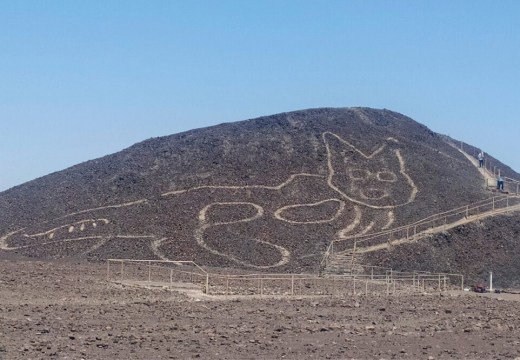
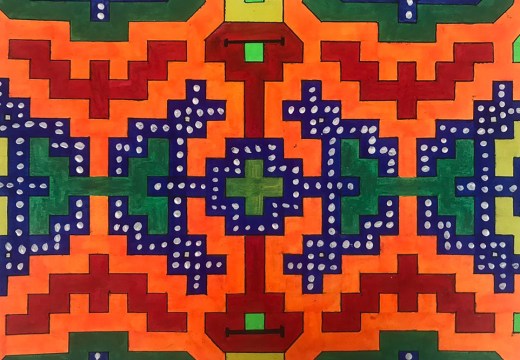
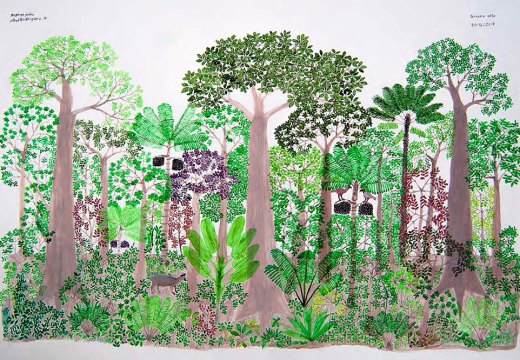









![Masterpiece [Re]discovery 2022. Photo: Ben Fisher Photography, courtesy of Masterpiece London](http://www.apollo-magazine.com/wp-content/uploads/2022/07/MPL2022_4263.jpg)
Has the Fitzwilliam got its rehang right?